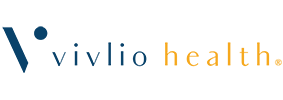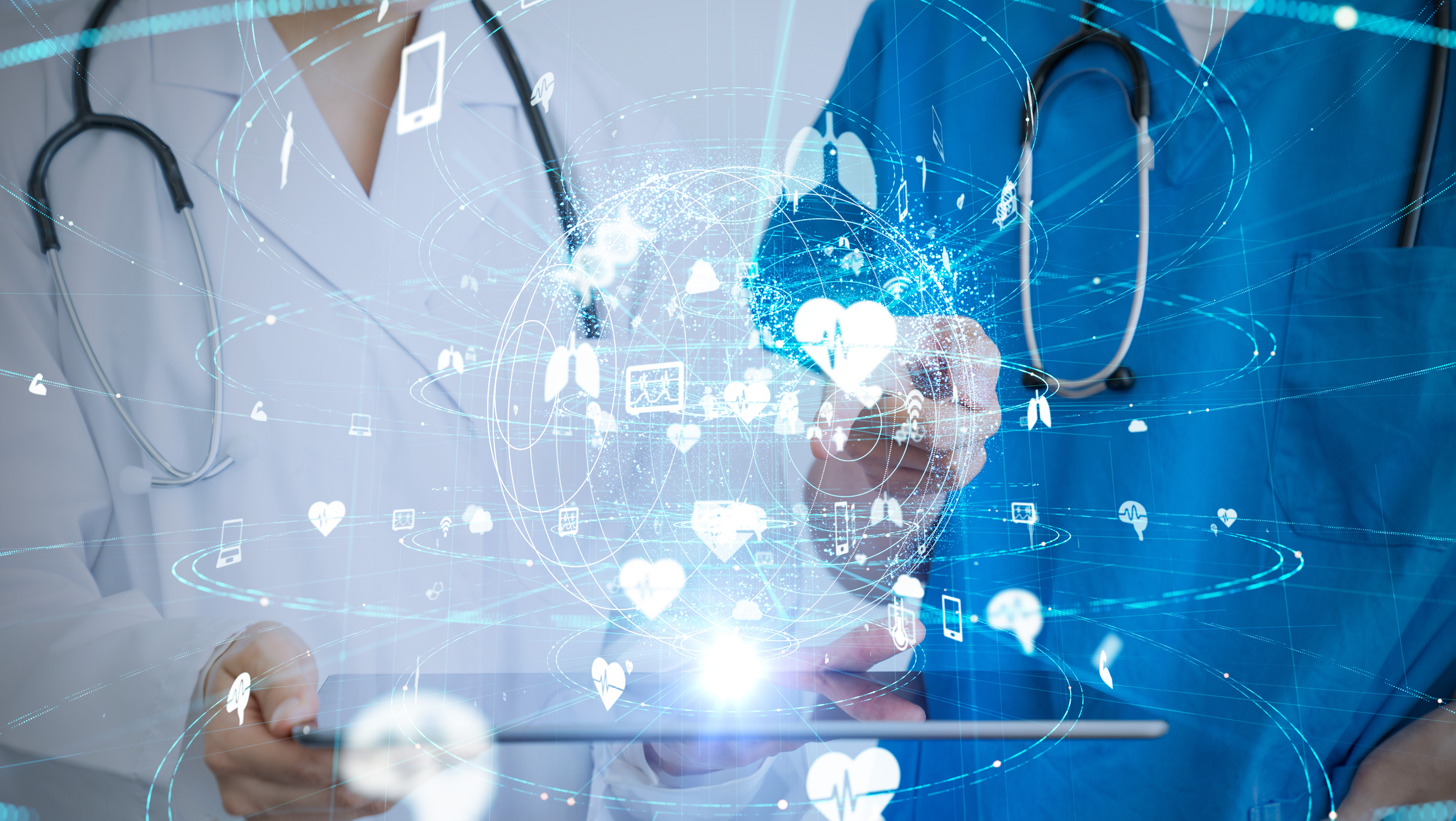How 7 Healthtech Advances Became New Healthcare Trends in 2023
Healthtech is ever-evolving, striving to improve and perfect medical solutions for patients and physicians. Technological advances in healthcare are imperative to move medicine forward, one day at a time. And while healthcare is constantly progressing, this year alone many new healthcare trends emerged or solidified, laying a robust foundation for healthtech in 2024.
While the healthcare industry has been under immense pressure, recovering from a pandemic, and coping with physicians’ burnout and staffing shortages, the need for technological advances never halts with diseases waiting to be cured, new drugs needing to be developed, and patients continuing to seek treatment.
In light of the many challenges it faces, the healthcare landscape requires versatility and a thorough understanding of areas in need of change — while diligently focusing on advancing patient care, developing new treatments, and ensuring workflow efficiency.
Healthcare Trends that Shaped 2023
Technology has been advancing at a rapid speed, constantly changing and evolving our growing healthcare industry. Healthtech and innovation are critical in addressing some of the industry’s most pressing challenges, offering solutions to many prominent issues.
(1) Workflow Automation
One of the top healthcare trends medical facilities continue to invest in is workflow automation. Why is that important? With a nursing shortage expected to spread across the U.S. by the 2030s¹ and physicians still reeling from a global pandemic and burnout, automation provides a solution to the multitude of demands healthcare professionals are facing today.
As healthcare organizations begin to understand the full value of workflow automation, alongside the extent to which it can alleviate the burden of a dwindling healthcare workforce, more clinicians are making this investment in their future.
According to HealthTech, 33.4% of healthcare facilities are committed to prioritizing the automation of repetitive tasks in their budget planning,² indicating a growing openness to embracing healthtech solutions.
(2) Zero-Trust Security
With the implementation of a digital healthcare system, a growing volume of clinical data, and the ease of data accessibility, the need for data security has become profound. Security is especially important as thousands of health reports are now at a provider’s fingertips and available to his office staff at the same time. But with progressing healthtech also comes growing responsibility.
Zero-trust security was introduced as a safeguard against data breaches, honoring regulations set in place to protect health data and maintain patient privacy. It aims to restrict access and prohibits unauthorized access to patient data.
Zero-trust established a foundation to verify all users and devices that attempt to access clinical records and can determine if mobile devices are on the right operating system or not.⁷ The zero-trust model has evolved in recent years and adopted lessons from government agencies — intending to provide exceptional security for patient data in today’s high-tech world.
(3) Advances in Telemedicine
During the COVID-19 pandemic, telemedicine emerged as a necessity, enabling patients to maintain medical appointments while following social distancing guidelines set forth by the CDC. Since then, telemedicine has developed into one of the most in-demand and rewarding healthcare trends of recent years.
Set to address acute medical complaints, telemedicine has expanded onto other specialty fields, including the management of chronic illnesses while also reaching underserved communities. With many patients struggling to take time off work to maintain regular health checks, telemedicine offers flexibility and convenience.
In addition, advances in telemedicine further help reach patients in remote areas by bringing patient care to their doorstep — allowing for better health outcomes and consistent patient care.
(4) Cloud Computing
The healthcare industry generates, without a doubt, massive amounts of health and patient data. But where does all this data go? One significant challenge of healthtech lies in successfully storing and managing the exponentially increasing amount of health data — compounding to 30% of the world’s total data volume.⁸
Having faced profound challenges regarding the storing and availability of patient data in the past, healthcare organizations have embraced cloud computing to manage clinical data efficiently and securely.
In addition, cloud computing further facilitates communication between providers and patients by giving them near-instant access to their medical information and lab reports, ultimately enabling patients to better understand their health.
(5) Remote Patient Monitoring with Wearable Devices
Remote patient monitoring (RPM) marks an impressive milestone for the healthtech industry, taking telehealth a step further. Instead of simply communicating the patient’s health via telemedicine, RPM uses wearable devices to provide reliable options for digital patient monitoring.
These digital devices include blood pressure monitors, blood glucose monitors for the management of diabetes, Holter monitors for cardiovascular conditions, and pulse oximeters.⁴ Clinical data is then electronically transferred over to the patient’s care team who can assess and analyze the numbers.
According to Insider Intelligence, an impressive 30 million patients in the U.S. will be using RPM tools to help support their health within the next year.⁵ Additionally, more hospitals are beginning to turn to RPM as it offers better patient care outcomes by providing real-time data, reduces costs, and is sensitive to the growing staffing shortage in the industry.
(6) Artificial Intelligence (AI)
Artificial intelligence (AI) is the epitome of healthcare technological advances, providing instant support and insight for many medical professionals. Just like with any other industry, AI is being used to analyze data and develop robust forecasts for the future by using machine learning algorithms.
AI can, therefore, aid in the decision-making process, determine patient behavioral patterns and responses to medicinal drugs, and make suggestions about potential risks for patients.
With increasing amounts of clinical data, AI will play a more critical role in the future, with many applications already available in healthcare. The main areas of AI support will be found in diagnosing and treating patients, as well as tracking patient adherence and involvement in their treatment journey.³
(7) Interoperability & Data Sharing
Interoperability is imperative in the healthcare industry providing multifaceted, reliable, and more complete resources. As one of healthcare’s greatest technological advances, interoperability allows systems to exchange and use collected health data.⁶
With patients receiving treatment from various specialty providers in different locations, all clinical data must be shared or else patient care quality and health outcomes could be put at risk. As interoperability is moving further into the focus, physicians underline the importance of having complete medical records available to thoroughly evaluate patients.
Interoperability, reliable data sharing, and successful collaboration with outside providers are crucial in reaching high-standard care goals, effectively treating patients, and reducing overhead costs.
The Innovative Healthtech Approach of Vivlio Health®
Efficiency and successful data sharing are at the heart of every healthcare organization, alleviating time-consuming manual tasks and facilitating collaboration between offices aiming to provide high-quality patient outcomes. At Vivlio Health, we strive to do our best to help healthtech advance even further.
While the healthcare landscape constitutes ever-increasing demands and challenges, Vivlio Health is dedicated to improving workflow efficiencies and providing clinicians with comprehensive medical records for their patients by utilizing a cloud-based system that can easily access and extract clinical data.
Healthtech has made significant leaps in 2023 alone, giving healthcare providers valuable novel tools to provide outstanding care. Ready to join in and build a foundation for high-quality patient care, while simultaneously reducing the burden on your staff? Book a free demo with us at Vivlio Health and let’s continue to shape healthcare — together.
References:
-
“Nursing Shortage Fact Sheet.” American Association of Colleges of Nursing, https://www.aacnnursing.org/news-data/fact-sheets/nursing-shortage. Accessed 5 December 2023
-
Wong, Wylie. “3 Health Tech Trends to Watch in 2023.” HealthTech Magazine, 3 January 2023, https://healthtechmagazine.net/article/2023/01/3-health-tech-trends-watch-2023. Accessed 5 December 2023.
-
Horowitz, Brian T. “Zero Trust in Healthcare: Securing Critical Applications | Health Tech.” HealthTech Magazine, 20 February 2023, https://healthtechmagazine.net/article/2023/02/zero-trust-in-healthcare-perfcon. Accessed 5 December 2023.
-
“The healthcare data explosion.” RBC Capital Markets, https://www.rbccm.com/en/gib/healthcare/episode/the_healthcare_data_explosion. Accessed 5 December 2023.
-
“Remote Patient Monitoring | PSNet.” Patient Safety Network, 15 March 2023, https://psnet.ahrq.gov/perspective/remote-patient-monitoring. Accessed 5 December 2023.
-
“Remote Patient Monitoring Trends & Health Devices in 2023.” Insider Intelligence, https://www.insiderintelligence.com/insights/remote-patient-monitoring-industry-explained/. Accessed 5 December 2023.
-
Davenport, T., & Kalakota, R. (2019). The potential for artificial intelligence in healthcare. Future healthcare journal, 6(2), 94–98. https://doi.org/10.7861/futurehosp.6-2-94.
-
“The Path to Interoperability.” HealthIT.gov, https://www.healthit.gov/sites/default/files/factsheets/onc_interoperabilityfactsheet.pdf. Accessed 5 December 2023.



